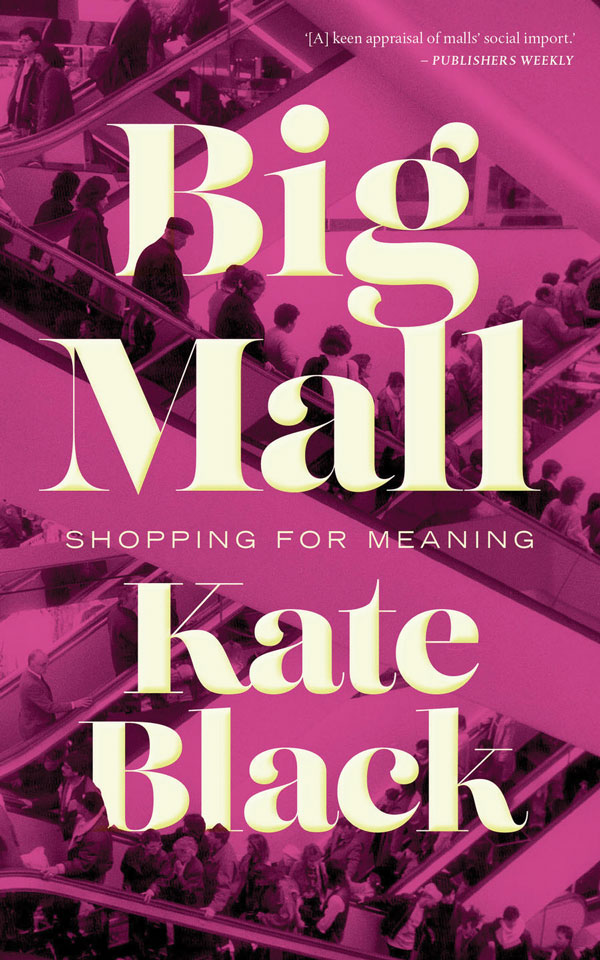Is the end of the world easier to imagine than the end of the mall? In her debut book, Big Mall: Shopping for Meaning, Kate Black argues that it is, but it’s not a situation without hope, since individual malls do fail and “if a mall can collapse, it means things won’t be this way forever.”
Part history, part memoir and part cultural assessment, Big Mall is a sharp literary exploration of West Edmonton Mall. Black, a National Magazine Award-winner in 2020, grew up in St. Albert, a short drive from what was then North America’s largest mall. The commercial palace served as a beacon of self-invention and worldliness for her, but over time the mall morphed into a beacon of guilt-filled bliss. “For anybody with moderate social awareness, it’s not hard to feel bad about malls,” Black writes, adding “if your beliefs about what’s wrong with the world touch broadly on capitalism, consumerism, colonialism, climate change or loud noises.” On the other hand, she still loves the mall, and the book is her attempt to untangle, or at least come to terms with, her conflicting feelings.
She starts with the ironic history of Austrian architect Victor Gruen—a committed socialist in his youth prior to moving to America and inventing the mall—before weaving through the 40 years of mall history since his death, a history that features suicides, teenage shenanigans, borderline animal torture and certified tragedies, all while interspersing the author’s own memories, reactions and conclusions. While she scrupulously draws on the essayist Mark Fisher and his personal exploration of depression in the late capitalist era, Black ultimately strikes a hopeful tone. “I wonder if it’s possible to see all this pain caused in the mall, because of the mall, and see the common experience as evidence of… a potential site for connection,” she writes.
People who think malls are fuel for potential climate and systemic collapse aren’t wrong. Black too feels as though she’s “longing for a future that isn’t coming.” But she rightfully reminds us that genuine human connection—meaning—takes place in malls, and we can’t ignore how malls have historically been used for protests, as unsanctioned shelter, for walking groups and more.
While this might feel too easy, the book’s simplicity is what makes it pertinent. Big Mall succinctly lays bare all that malls have destroyed, leaving alienated shoppers scrambling to find the pieces of what can be salvaged. But when those pieces are reconstructed, as Black has done for us, we’re left with a choice between hope or despair. If we choose hope, we choose to think malls might bring people together in the future—for the better, regardless of what’s in store.
—Jack Farrell is a reporter at the St. Albert Gazette.
_______________________________________


